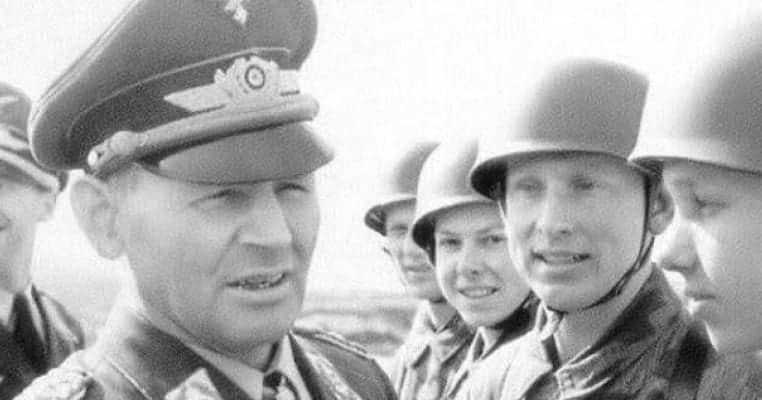“You can’t teach an old dog new tricks” is a nugget of conventional wisdom that nobody seems to have passed on to Hermann Bernhard Ramcke (1889 – 1968), one of Germany’s most versatile dogs of war. He started his military career as a sailor and then a Marine with the Imperial German Navy, with whom he saw combat in World War I. In the interwar years, he fought as a volunteer on the side of the Whites in the Russian Civil War, and switched to the German army. Finally, he joined the Luftwaffe during the Second World War, qualified as a paratrooper while in his fifties, and became one of the war’s outstanding leaders of airborne forces.
In addition to being one of Germany’s most versatile soldiers, Ramcke was also one of his country’s most decorated ones, earning the highest military awards available in both world wars. However, while an outstanding soldier, Ramcke was also a nasty piece of work as a human being. An ardent Nazi to his dying day, he was convicted of war crimes against French civilians, and was fortunate to get away with even graver war crimes against Greek civilians in Crete.

Ramcke’s Pre-Paratrooper Career
Ramcke was born in 1889 into a family of farmers in Schleswig, and joined the Kaiser’s navy in 1905 as a ship’s boy. When WWI began, he was serving aboard the SMS Prinz Adelbert, an armored cruiser, and saw action in the Baltic and North Sea. In July of 1915, his ship was torpedoed by a British submarine and suffered extensive damage, which required correspondingly extensive repairs. By then, Ramcke had acquired a taste for action and the adrenaline rush of combat. Fearing that the war might be over by the time the Adelbert returned to service, he transferred to the Marines.
It was a stroke of good fortune. For one thing, Ramcke ended up seeing plenty of action and combat with the Marines – as much as he had ever wanted and more. He also stood out and gained recognition in ground combat operations with the Marines that, as an enlisted man, would have been unlikely as a sailor aboard ship. On top of that, the Adelbert ended up repaired sooner than Ramcke had thought she would, and was rushed back into combat in October, 1915. That was just in time to cross paths with another British submarine, which promptly torpedoed her.
The Adelbert was less fortunate the second time around. The torpedo detonated her ammunition magazine, and the resulting massive explosion quickly sent her to the bottom of the Baltic Sea. Of her complement of 675 officers and men, only 3 survived what proved to be the worst German naval disaster in the Baltic during the war. Ramcke escaped death in his former ship, then escaped death on numerous occasions as a Marine infantryman on the Western Front.
His unit fought in Flanders, where Ramcke distinguished himself, earning the Iron Cross second class in 1916, and the Iron Cross first class – a rarity for enlisted men – soon thereafter. He would go on to win the Prussian Military Merit Cross – the highest bravery award available to noncommissioned officers and enlisted men in the Imperial German Forces – and get commissioned as an officer for heroics displayed in a hard fought defensive action.

After the war, Ramcke volunteered to fight in the Russian Civil War against the Bolsheviks, as a member of the “Russian Army of the West” – a unit composed primarily of German WWI veterans. He remained with the Reichswehr during the interwar years, and by 1937 he had risen to lieutenant colonel in the new Wehrmacht. In July of 1940, he was promoted to colonel and transferred to the 1st Fallschirmjager Division – Germany’s elite parachute landing division. He successfully completed the qualification course, and became a paratrooper at age 51.

